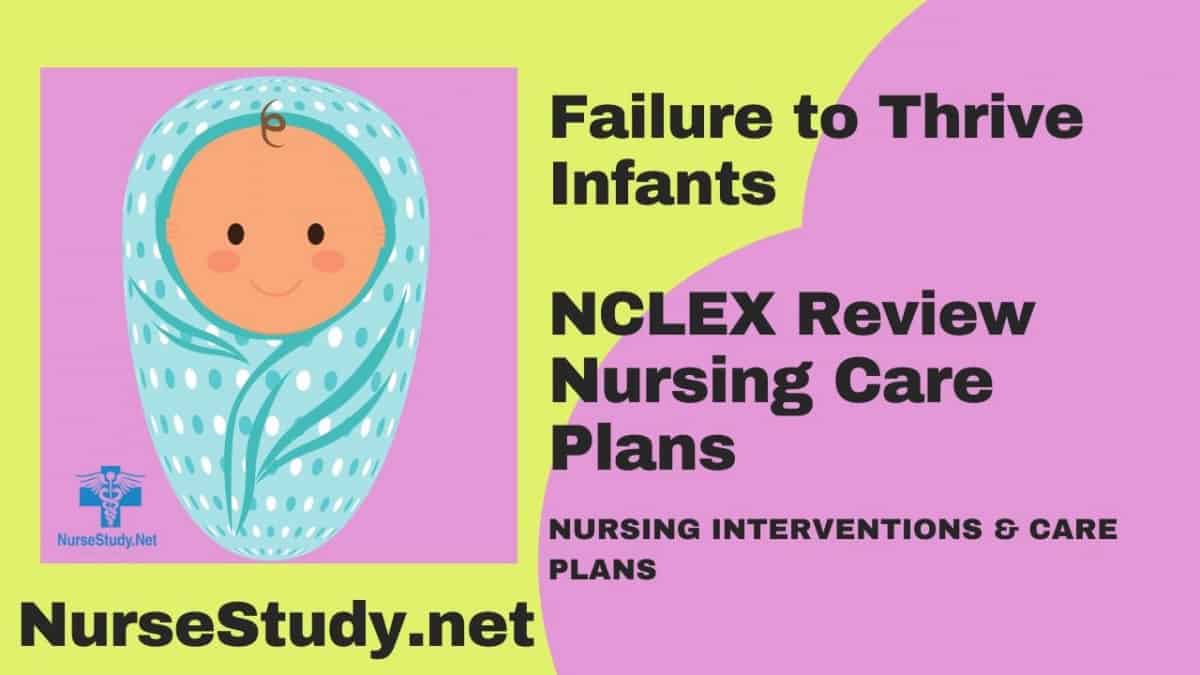
Failure to Thrive in Infants NCLEX Review and Nursing Care Plans
Failure to Thrive (FTT) in infants is a condition wherein the child is not gaining weight at an expected rate. It is identified as a very common problem usually encountered in the Pediatric practice.
Compared to other infants of the same age, children with FTT condition tend to be smaller and shorter. The two classifications of failure to thrive in infants are Organic and non-organic.
Both types of FTT relate to inadequate nutrition. The pathophysiology of FTT involves the deficiency of calories essential for the adequate growth of the child.
This can be a result of not taking enough calories, losing too many calories, or an increase in caloric demand. It is important to have an early recognition and treatment of Failure to Thrive to prevent possible developmental delays and other long-term effects on the child’s development.
Failure to thrive can be caused by medical issues or environmental factors. The following are the causes that contribute to the FTT condition:
2. Other causes
Nutritional rehabilitation is the main concern of the treatment. It should be emphasized that immediate management of acute problems such as dehydration, shock, sepsis and others must first be addressed.
To determine the efficacy of the intervention, the following must be obtained:
One of the most important steps for caring FTT is documentation. It provides insights that will serve as guidance to make formative decisions. Additionally, it will give information if there are improvements of patient’s condition. Documentation of the following information must be taken into consideration:
All young children who are diagnosed with FTT, whether primarily organic or psychosocial in origin, suffer from serious malnutrition and are at high risk to develop long term physical and psychological developmental problems.
It is not enough to know the FTT classification type of the patient. The approach must also involve nutritional, developmental and psychosocial influences.
Ackley, B. J., Ladwig, G. B., Makic, M. B., Martinez-Kratz, M. R., & Zanotti, M. (2020). Nursing diagnoses handbook: An evidence-based guide to planning care. St. Louis, MO: Elsevier. Buy on Amazon
Gulanick, M., & Myers, J. L. (2022). Nursing care plans: Diagnoses, interventions, & outcomes. St. Louis, MO: Elsevier. Buy on Amazon
Ignatavicius, D. D., Workman, M. L., Rebar, C. R., & Heimgartner, N. M. (2020). Medical-surgical nursing: Concepts for interprofessional collaborative care. St. Louis, MO: Elsevier. Buy on Amazon
Silvestri, L. A. (2020). Saunders comprehensive review for the NCLEX-RN examination. St. Louis, MO: Elsevier. Buy on Amazon
Please follow your facilities guidelines, policies, and procedures.
The medical information on this site is provided as an information resource only and is not to be used or relied on for any diagnostic or treatment purposes.
This information is intended to be nursing education and should not be used as a substitute for professional diagnosis and treatment.
Anna Curran. RN-BC, BSN, PHN, CMSRN I am a Critical Care ER nurse. I have been in this field for over 30 years. I also began teaching BSN and LVN students and found that by writing additional study guides helped their knowledge base, especially when it was time to take the NCLEX examinations.